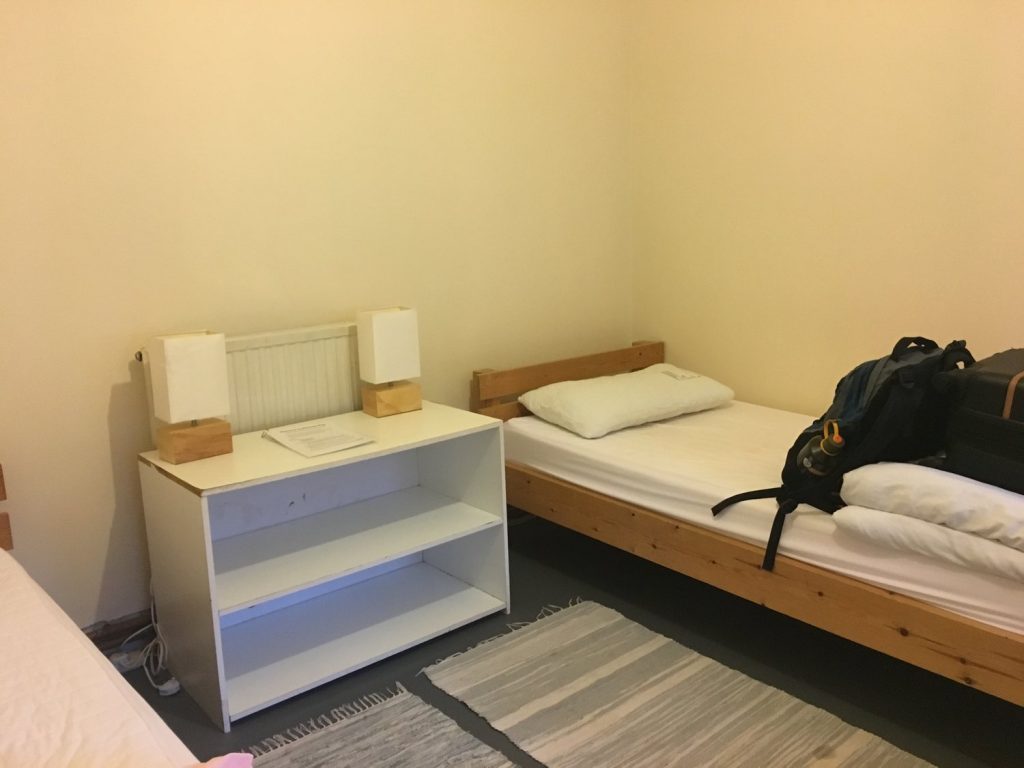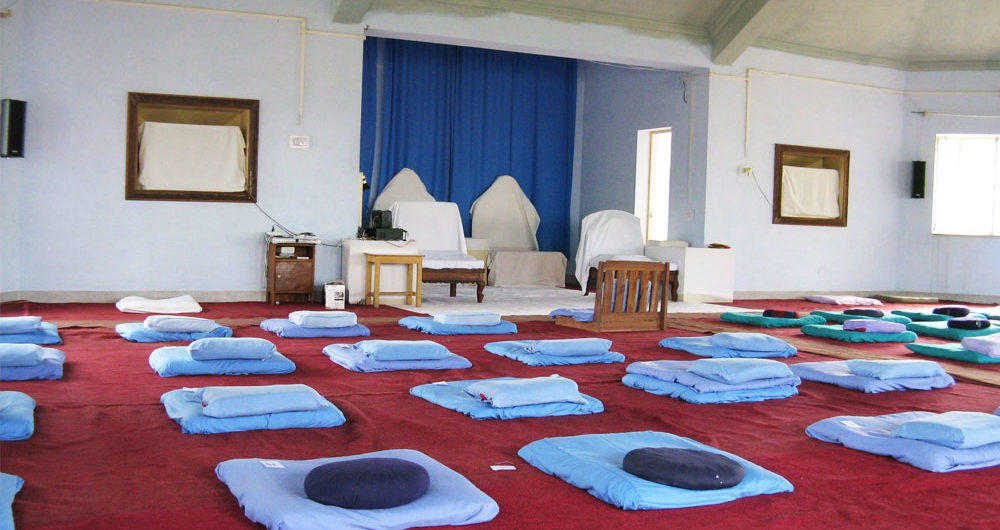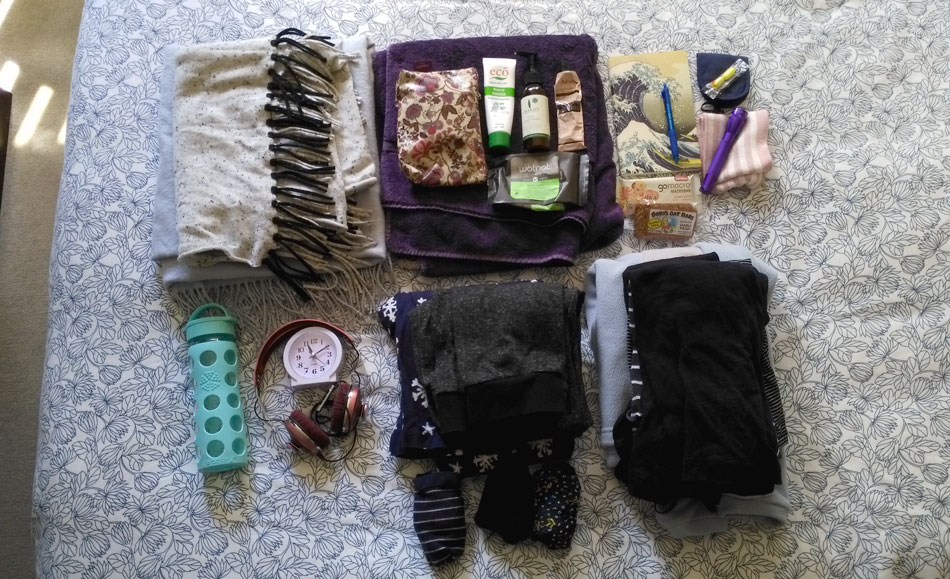Vipassana 10-Day Silent Meditation Retreat: 17 questions answered
by Jenn Bodnar | June 26, 2019 1:59 am
Vipassana meditation attracts many different people for just as many reasons. Some are looking to heal from severe trauma, some are seeking enlightenment and awareness, and some are just looking for tools to help discipline their mind from craving and attachment.
After hearing about this mysterious and intimidating practice from numerous colleagues and friends over the years, I decided to ask Yoga Digest Account Executive and Contributor, Pat Fabulous, about her experience. She has attended the 10-day sit twice, the 3-day sit three times and served (assisted) at least 5 additional times. I figured she may know a thing or two and be able to provide the rest of us a little insight.
1. What is Vipassana?
Pat Fabulous: Vipassana is insight meditation. It’s based on observation of breath, with the foundation of Anapana (breath awareness) and then with the addition of observation of bodily sensations. When you learn how to practice Vipassana you train the mind to be non-reactive to sensations; whether those be pleasant or unpleasant.
2. Where can you do it?
PF.: There are Vipassana centers all over the world and the technique is taught in every language.
3. How should you prepare for it ahead of time?
PF: Keep an open mind. Anyone can attend a course and learn the technique. During my first 10-day course I thought I needed to practice sitting for long periods of time and meditate on my own. But actually, they give you all the tools you need to learn the technique when you arrive at the center. Some people have never meditated in their life.

4. What is lodging like?
PF: The Centers vary depending on the location. The Texas Center – Dhamma Siri Southwest Vipassana Meditation Center located in Kaufman, Texas is one of the most prestigious in the world. Everyone has a private room, all women’s quarters have a private bathroom. Most of the men’s also have private bathrooms but some of the men’s dorm rooms have shared showers.
When I attended the center on the big island of Hawaii, we had bungalows and tents with outdoor showers and restrooms.
5. What are sleep times/wake times? Do you get breakfast, lunch and dinner breaks? What’s the food like?
PF: The first Gong for wake up is at 4am and at that time you can join the group sit or meditate in your room. There are 3 group sits per day – most of which are one hour but a few are 2-hour sits. They feed you very well with a Big Breakfast every day and awesome lunch. There is no dinner. After the afternoon sit, they serve fruit and tea. Lights out by 10 pm!
6. Do you get to talk to anyone at all during your stay?
PF: You take a vow of silence on your first day. After that you do not speak to fellow meditators, you have no physical contact, and even try to avoid eye contact. If you need help or have questions, there is a course manager to help you. Also, you can speak to the teachers.
7. How much does it cost?
PF: There is no cost. The courses are free to anyone who would like to attend. After the course, you can donate to the center. Once you have attended a 10-day course and know the technique you can serve at the center during courses or in between courses. The philosophy is that each student is given a gift by a previous student. Everything is strictly volunteer and donation based. And they do not accept donations from anyone that has not gone through a 10-day course.
8. How long do you sit without moving?
PF: The longest group sit is 2 hours. You practice with strong determination (no movement). If you have to move you can, but the goal is to achieve a state in which you can sit for the entire time without moving your hands, legs or feet.

9. Can you bring malas, listen to mantras?
PF: Other types of worship, meditation, religious ceremony, and even prayer is not allowed. Malas or other talisman or religious tokens like crosses, hammas, healing crystals, etc. are also discouraged. Reading books, journaling, music, chanting, mantras, dancing, and singing are not the endorsed or taught in this experience. This is not to condemn any of these activities or beliefs. It is to keep the purity of the practice in tact during your stay an not be distracted from learning the Vipassana technique.
10. What should you wear?
PF: Loose fitting pants or even long skirts for women is appropriate. Nothing distracting, with labels and graphics is best. Tight yoga clothes, shorts, tank tops, or revealing clothing is not allowed.

11. What should you pack?
PF: Comfortable clothes, a warm sweater, even in the summer, slip-on shoes or slippers (no shoes are worn in any of the buildings), a rain jacket and rain boots, a water bottle for refilling in the kitchen. Take a coffee cup with a lid for hot tea, a shawl for meditation hall, and a small night light for your room. Bring your own towels, twin size sheets, and a pillow. They have blankets. Bring your own toiletries. If you forget something – they will likely be able to provide it. If possible, bring a yoga block, yoga therapy balls, and yoga blanket. Bring good pair of close-toed walking shoes.
12. What are some of the biggest challenges?
PF: It can be different for everyone. No physical activity or very limited exercise can be challenging for many. I miss Ashtanga when I go.
13. What are some of the benefits?
PF: Some of the benefits are: lowers stress, lowers blood pressure, enhances your immune system, helps with pain management, helps with sleep, detoxes the mind of impurities,
calms the mind, you learn a broader perspective, and most importantly Impermanence.
14. Why should people consider it?
PF: I can only speak for myself, but this form of meditation changed my life. I also know people who have actually been healed of illness and addiction after they began to practice and finished the 10-day course.
15. What were some of the takeaways for you personally?
PF: Life is short. It is so important to be happy and do what makes you happy. And that is actually a message that is given throughout the course. “May all beings be Happy and May all beings be free.”
16. How many people should you expect?
PF: It depends on where you attend. Some larger centersn can have over 150 students plus servers and staff. The smaller centers less than 100.
17. Is there any time for activity? Like going for a run?
PF: No running. But you have time for long walks and I found this to really be a big part of the experience. There is a time to connect with nature and be outside. I do at least two 45 minute walks every day at the center during the morning and afternoon breaks. That’s why I bring rain gear!
Source URL: https://yogadigest.com/vipassana-10-day-silent-meditation-retreat-17-questions-answered/